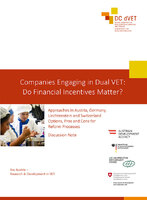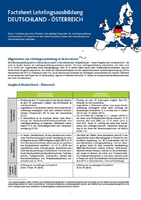Our research work on school-based education and training covers a wide gamut of topics and ranges from education forecasts and trend analyses onto questions related to school governance. With our concepts and analyses on school-based education and training we supply the resources and bases for actors of the education sector.
Our areas of expertise:
- structural, trend and education flow analyses
- studies related to school governance, funding and quality development
- needs and acceptance studies to set up new training specialisations or establish new school locations

